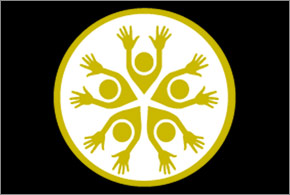|
While the worst of the global recession may now be over, countries
around the world face difficult times ahead. The turmoil
that engulfed Greece and the apparent threat to the rest of
Europe has convinced governments across the continent that they
need to
reign in spending. In the US, a number of states are wrestling
with severe
deficits and the only remedy looks to be cuts.
The danger is that a prolonged period of retrenchment will be
devastating
to the most vulnerable members of society.
Philanthropists are rightly
concerned and want to find ways to help but the road ahead is
not clear.
Charities and foundations cannot hope to fill the gaps in government
budgets, so simply pumping them up with more cash is not enough.
But individuals and private organisations can explore areas
governments fear
to tread, allowing their dollars, pounds or euros to tackle
stickier or politically
unpalatable problems. The emerging post-crisis model of philanthropy
prizes
engagement over largess and results over spending. Creative
thinking and risk
taking will be vital and donors will need to draw on their experiences
in
business to find new ways of tackling social problems.
Michael Green co-authored Philanthrocapitalism and The Road
From Ruin
with Economist journalist Matthew Bishop. Their first book was
published
at an inauspicious time: it came out the day Lehman Brothers
went bust.
But former US president Bill Clinton praised the authors’
vision and in
a foreword to Philanthrocapitalism wrote, “We have to transform
the world into one of shared responsibilities, shared opportunities,
and a shared sense
of community. Bishop and Green show us how to do it.”
Post-recession adjustment
Perhaps with the sound of collapsing banks ringing in their
ears, some
wilder critics claimed the rich were about to vanish from the
face of the
Earth and along with them, charitable donations. Nonsense, says
Green.
“What we’ve seen as the Forbes list has come out is
that the rich have
bounced back pretty quickly.”
It is governments, he argues, who will suffer in the long term.
“Everyone
in the past has said let’s just tax the rich and let the
state do everything.
In the current fiscal situation, we’re all going to be
paying more tax but
governments are not going to be able to do what they could before.”
In this context, the wealthy need to re-examine the role they
play in
supporting social and charitable organisations and work to achieve
the
partnerships suggested by Clinton. Through his California-based
company
Tactical Philanthropy Advisors, Sean Stannard-Stockton has been
urging
donors to concentrate on a limited number of causes for years
but it was
the shock of the recession that really changed attitudes.
“In the past, people were writing small cheques to 40
or 50 different
non-profit organisations but as the economy contracted, they
wanted to
focus their money on the organisations they had the most conviction
for
or that were doing the best work,” he says. “Almost
by definition it’s hard
to be aware of and have strong connections with 60 different
groups.”
|
 |
Jeffrey Solomon, president of the Andrea and Charles Bronfman
Philanthropies in New York, agrees and urges donors to follow
their hearts. “To the degree that their philanthropy speaks
to their passions,” he says, “they’re going to
focus, spend more time and more money, and the world will be
improved as a result.”
By committing to a small number of institutions and activities,
donors
can leverage their financial contributions and bring their personal
talents
to bear, delivering a far greater impact.
“People describe philanthropy as the R&D of social
work, or even its
venture capitalism,” says Stannard-Stockton. “It can
take risks that the
government can’t with tax-payer money, especially for programmes
that
are unusual or counter-intuitive in some way.”
Ever larger numbers of donors are approaching giving like any
other investment and while there might not be a financial return,
this attitude has significant benefits. It encourages social
organisations to concentrate on delivering outcomes and developing
innovative ideas. Measurement can require a lengthy period of
in-depth analysis but once a programme’s value has been
proven it can be scaled up quickly or implanted into new communities.
Stannard-Stockton gives the example of Nurse Family Partnerships,
a US organisation that provides support to low-income first-time
mothers. From its roots in the 1970s, the idea has spread across
the country and is now steered by a national body.

The programme was the subject of three major academic studies
in the
1970s, 1980s and 1990s, all of which demonstrated its success
in improving
health and educational outcomes of the children it worked with.
The evidence
of these studies has helped the organisation attract government
funding.
Profit earner to profit giver
Stannard-Stockton cautions that donors who have been successfully
running their own companies do not always translate that experience
into
the social sector. As the return
on investment becomes more
difficult to measure, some assume
there is no return at all, leading
to skewed funding decisions.
“It’s very difficult to prove the
impact that non-profits are having
and donors sometimes use overly
simplistic measures,” he says. “One
would be the amount an organisation
spends on overheads, which it wants to
be as low as possible because it’s seen
as waste. But it’s actually the money you invest in
fantastic employees, technology and other resources.”
|
 |

An increasingly popular way of supplementing financial contributions
is
for supporters to get directly involved in the running of an
organisation.
“While all NGOs are looking for money, most are also looking
for
talent and people prepared to spend time are an important resource,”
says
Solomon. “Take a look at people retiring early and living
longer – that’s a
lot of time that could be better used for the benefit of mankind.”
He adds that tech entrepreneurs are really leading way in this
respect.
Many are selling their businesses in their 30s or even 20s and
moving
into philanthropy, sparking a boom in organisations dedicated
to solving a
particular problem and a new, more adventurous approach to social
innovation.
The risk is a serious culture clash between the activist donor
and the
leaders of the organisation he wants to support. Charities have
been wary
of businessmen and their motives in the past and need to be
shown the
benefits of an investment approach firsthand.
Green sees it as a two-way process. “Charities are going
to have to
realise they’re dealing with different kinds of donors,
they can’t just take
the money and then neglect them,” he says. “They’ve
really got to have a
much more engaged relationship to harness the donor’s skills.
At the same
time, though, philanthropists need some humility.”
Stannard-Stockton puts it more starkly: “Just showing
up and saying ‘I want
to be put to work because it’s what I want’ isn’t
actually a gift of anything.”
Social skills
When the British venture capitalists Stephen Dawson and Nat
Sloane
founded the Impetus Trust to fund a range of charitable projects,
they
recognised that they needed to bring people from the social
sector on
board. They have managed to successfully combine the values
of business
and charity in their work and challenged some of the assumptions
of
social projects without undermining them.
“It’s all about whether you can turn that clash of
cultures into
something productive,” Green says. “My fear is the
charity sector can
be too defensive and ignore the possibilities, and donors can
be too
apologetic and see the non-profit world as an entirely different
sphere.”
Breaking down the fourth wall can be uncomfortable for both
donors and
the organisations they support but there are significant benefits
to be had, if they
push through the initial pain. While there is a need for philanthropists
to take
more time to build up an understanding of the sector, they should
not avoid
asking difficult questions and making use of their skills and
ideas. If both parties
go into the partnership with their eyes open, they will be much
better placed to
solve some of the most pressing problems facing their communities.
|









